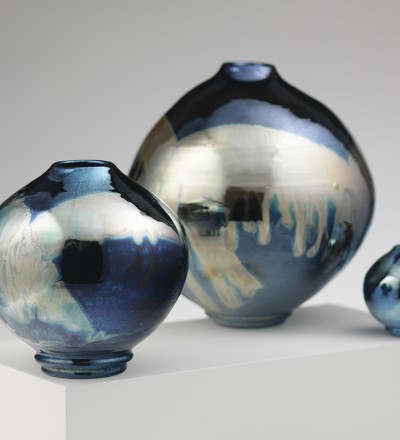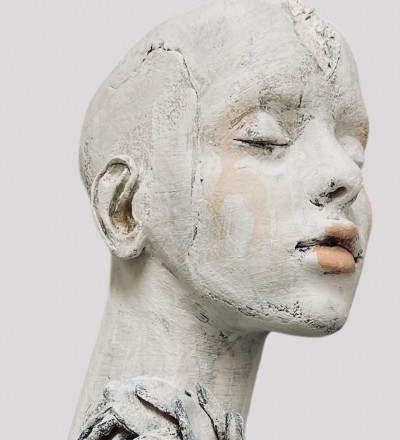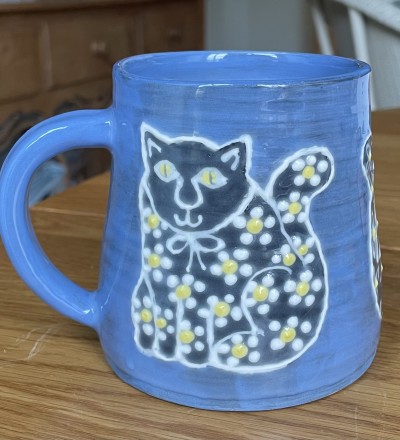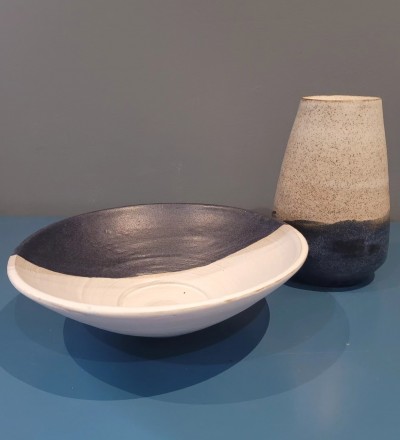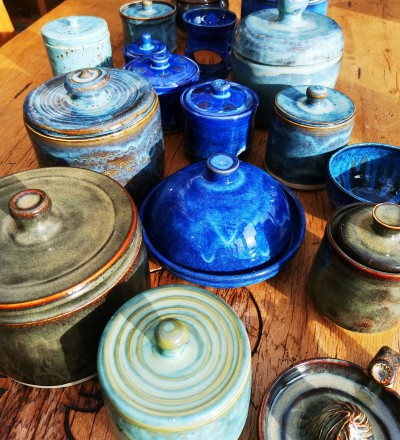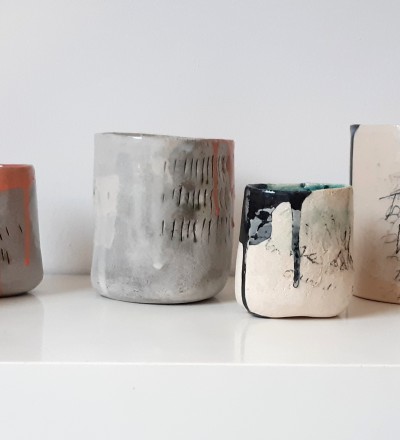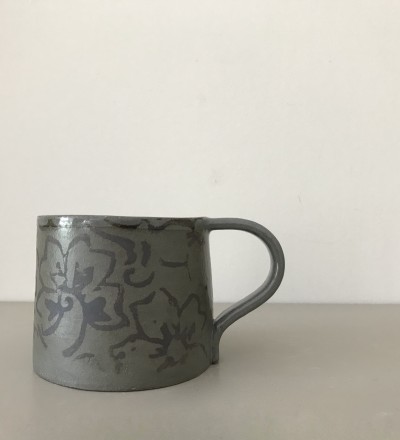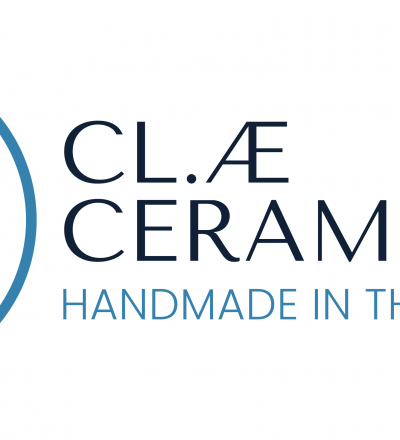Chris is an Edinburgh based potter and painter, an avid traveller and Qigong teacher.
Chris started his first pottery in Scotland in 1970 having studied art and architecture at Kingston College of Art and later Edinburgh University.
He previously worked as a conservation Architect with involvement involved in projects at many of Scotland?s most iconic historic buildings.
His fascination with Raku, sawdust and pit-firing started in the mid 1990?s and has recently been re-kindled whilst exploring Raku fired hand-built and thrown forms.
The turquoise wheel thrown pieces are fired in a small Raku kiln and cured in sawdust or seaweed to produce the dark unglazed bases.
The Keep-sake boxes are individually assembled from hand-rolled and embossed clay sections then fired in a reduction atmosphere using a combination of glazes and oxides.
The hexagonal stoneware forms are inspired by the geology of North West Scotland, an area Chris has explored extensively both on foot and by sea.
The surfaces of the hexagonal forms explore the contrasting textures and folds of Sutherland?s ancient rocks.
They contrast the matt blacks, greys and greens of the dolerite and Lewisian gneiss with the vitreous lustres of quartz contained in the igneous granite intrusions.
NB Neither Raku or pit-fired pieces are suitable for use with food.
Chris Watkins Mobile 07760665597
Chris started his first pottery in Scotland in 1970 having studied art and architecture at Kingston College of Art and later Edinburgh University.
He previously worked as a conservation Architect with involvement involved in projects at many of Scotland?s most iconic historic buildings.
His fascination with Raku, sawdust and pit-firing started in the mid 1990?s and has recently been re-kindled whilst exploring Raku fired hand-built and thrown forms.
The turquoise wheel thrown pieces are fired in a small Raku kiln and cured in sawdust or seaweed to produce the dark unglazed bases.
The Keep-sake boxes are individually assembled from hand-rolled and embossed clay sections then fired in a reduction atmosphere using a combination of glazes and oxides.
The hexagonal stoneware forms are inspired by the geology of North West Scotland, an area Chris has explored extensively both on foot and by sea.
The surfaces of the hexagonal forms explore the contrasting textures and folds of Sutherland?s ancient rocks.
They contrast the matt blacks, greys and greens of the dolerite and Lewisian gneiss with the vitreous lustres of quartz contained in the igneous granite intrusions.
NB Neither Raku or pit-fired pieces are suitable for use with food.
Chris Watkins Mobile 07760665597










